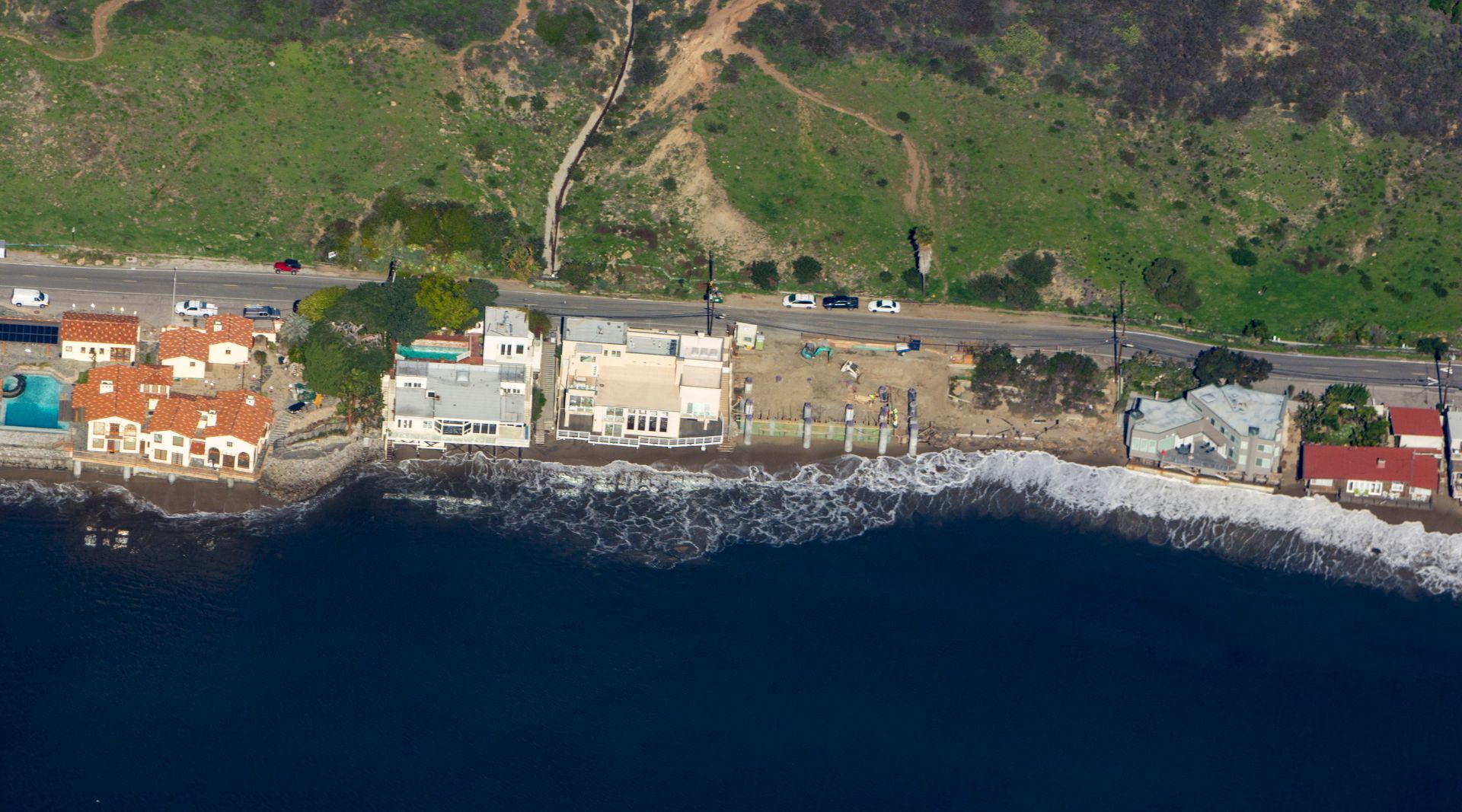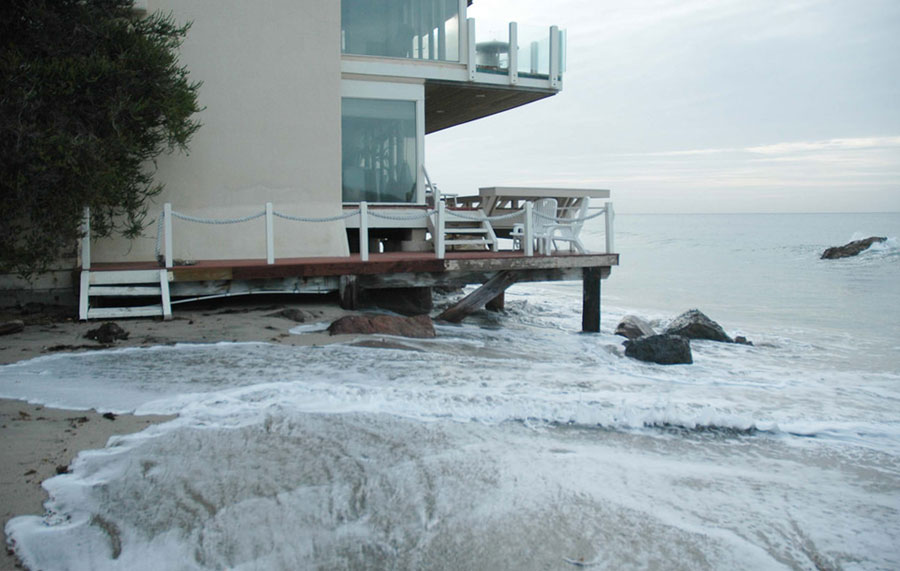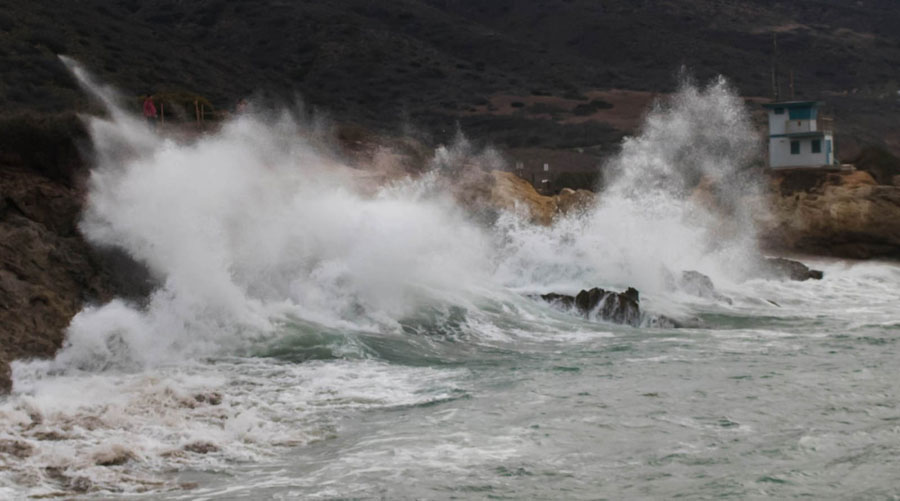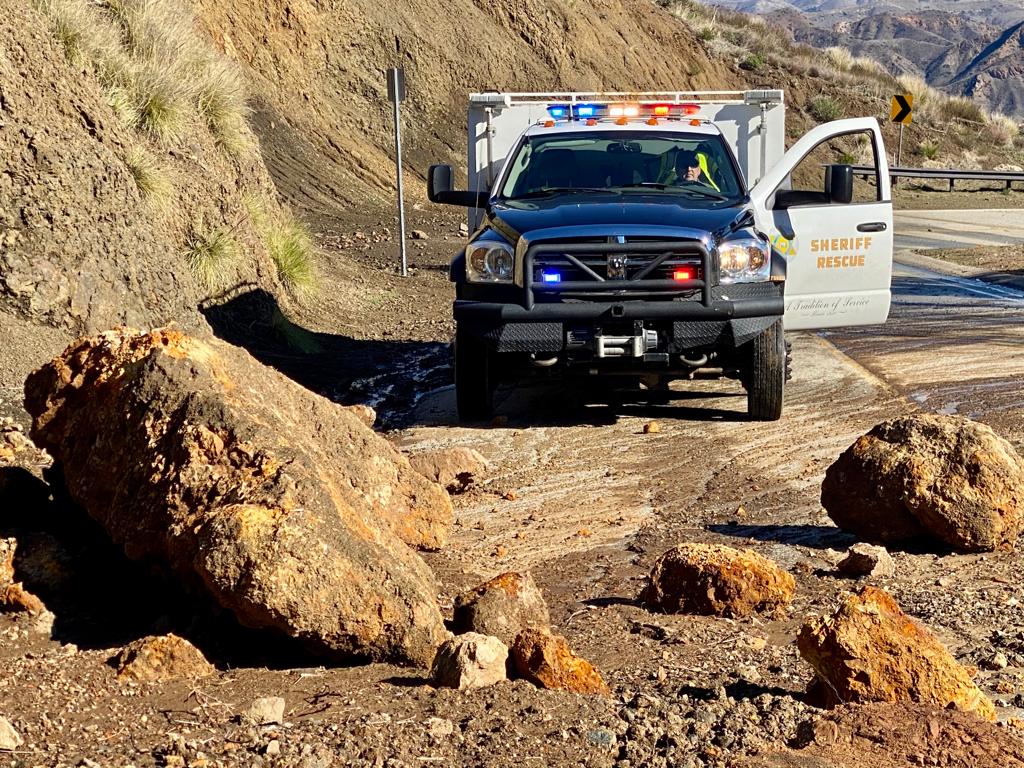
The last King Tides of this winter is Monday, January 3rd.
Unusually high "King Tides" up to 7.3 feet will affect our beaches. Minor coastal overflow will be possible in some areas, along with a chance of minor beach erosion.
While the term "King Tide" isn't a scientific term, it is used to describe very high tides, caused when there is alignment of the gravitational pull between sun, moon, and Earth. When King Tides occur during floods or storms, water levels can rise higher and have the potential to cause great damage to the coastline and coastal property.

The sea level rise we're experiencing now and will experience in the future is caused by the growing concentration of carbon dioxide (CO2) in the atmosphere created when people burn fossil fuels like coal, oil, and natural gas. Carbon dioxide in our atmosphere acts like a blanket, trapping in heat that would otherwise escape, and when we burn fossil fuels, we're adding more carbon dioxide, "thickening the blanket" and warming the planet and ocean. Sea level is rising because land-based glaciers and ice sheets are melting into the ocean and also because water expands in volume when it warms. Increases in global sea levels have been recorded by tide gauges since the late 1800s, and more recent observations have been collected by NASA satellites. The amount of sea level rise we will ultimately experience will depend on how quickly we stop burning fossil fuels.
California will be greatly impacted by sea level rise. For example, San Francisco is projected to see a rise between 1.1 and 2.7 feet by 2050, and by 2100 could experience between 2.4 and 6.9 feet of sea level rise with a potential for more than 10 feet of rise if there is extreme melting of the West Antarctic ice sheet.

King Tides themselves are not caused by sea level rise, but allow us to experience what higher sea level will be like. King Tides are the highest high tides of the year, about a foot or two higher than average high tides, which corresponds to the one to two foot rise in sea level expected during the next few decades. When you observe the King Tides, imagine seeing these tides (and the associated flooded streets, beaches, and wetlands) almost daily. Understanding what a King Tide looks like today will help us plan for sea level rise in the future and motivate us to stop burning fossil fuels. Sharing your photos and talking about what you've noticed helps others understand that they're part of a community that cares about climate change.

Visit
California King Tides Project to learn more.















.png)
Social Buttons